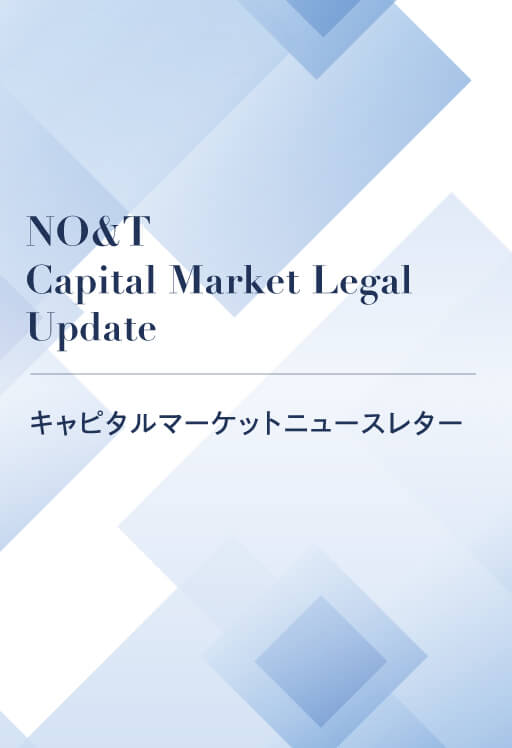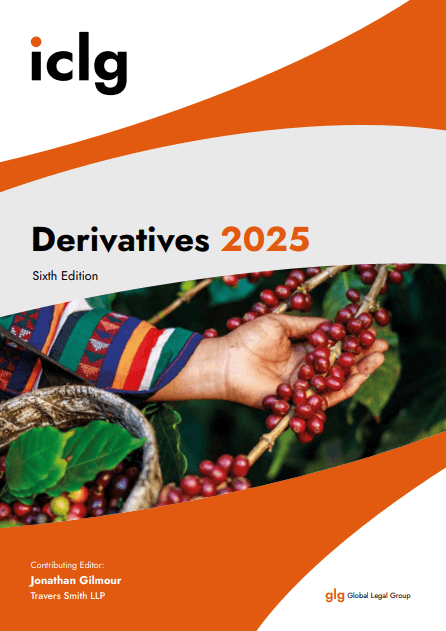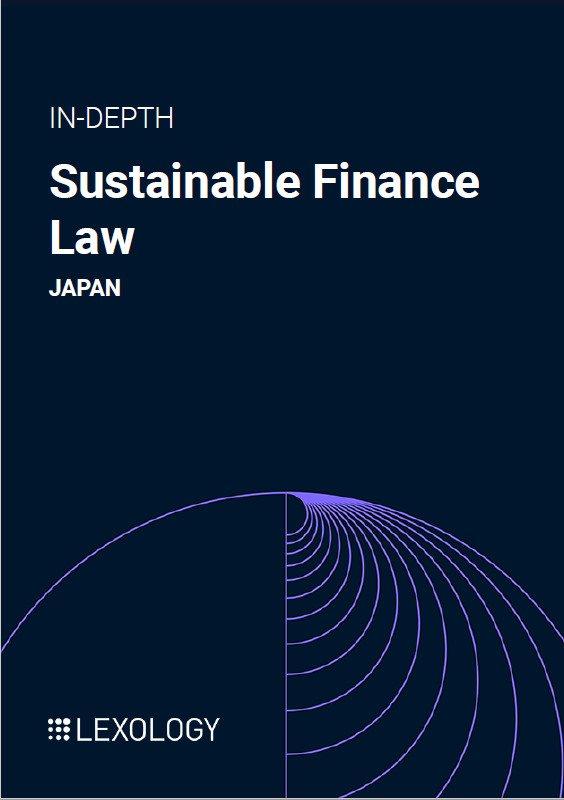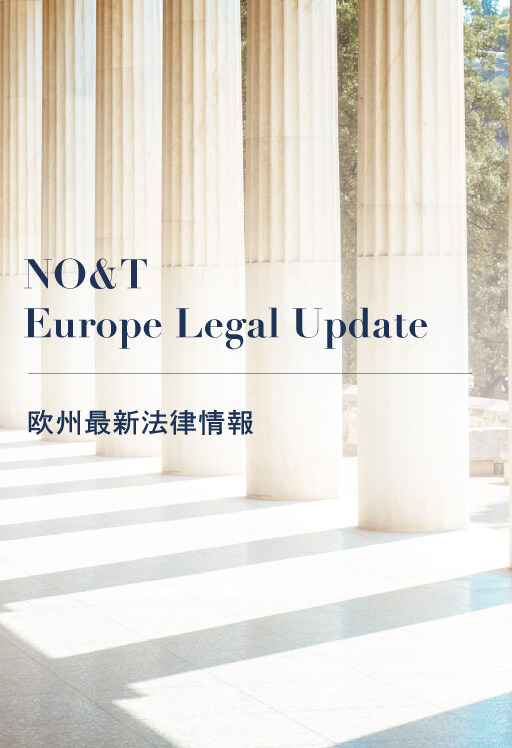
NO&T Capital Market Legal Update
This article is also available in Japanese.
On November 14, 2024, a set of rules integrating the “EU Listing Act” was published in the Official Journal of the European Union (“EU”).
The EU Listing Act is a package of measures that intend to simplify listing rules for companies seeking to go public, while providing a more cost-efficient regulatory framework. It consists of the following:
The EU Listing Act is part of a broader set of legislative proposals published on December 7, 2022, aimed at developing and consolidating the EU’s Capital Markets Union — an initiative designed to create a single market for capital in the EU, by integrating and improving access to financial markets across the EU for the benefit of consumers, investors and companies, regardless of their location — (read here for more information).
Below is a summary of the most important amendments introduced by the EU Listing Act, along with details on their date of application.
The EU Prospectus Regulation establishes that, prior to offering securities to the public or to admitting them to trading on a regulated market in the EU, a prospectus shall be published. However, there are several exemptions to this obligation, and some of them have been amended by the EU Listing Act as summarized in items i. and ii. below.
The threshold for a prospectus exemption in public offers of securities is increased, in a 12-month period, from €1 million (with the Member States’ right to raise it to €8 million) to €12 million (with the Member States’s right to reduce it to €5 million). Member States may still require issuers to prepare an informative document summarizing key details about the issuer, the securities and the offer terms.
The threshold for a prospectus exemption in admissions to trading of securities that are fungible with those already traded on the same regulated market is raised from 20% to 30% of the share capital, over a 12-month period. For instance, new shares issued in a capital increase by a company listed on Euronext Amsterdam, one of the EU regulated markets, may be admitted to trading on Euronext Amsterdam if they represent less than 30% of the company’s already listed securities in 12 months.
The above exemption is extended to public offers of securities that are fungible with securities listed on regulated markets or SME growth markets (a sub-type of MTFs introduced to improve small and medium enterprises’ access to market-based finance), provided that (i) the issuer is not subject to restructuring or insolvency proceedings, and (ii) a simplified information document is submitted to the relevant national competent authority (“NCA”) —without the need for prior approval by such NCA—.
The exemption threshold is also increased from 20% to 30% of the share capital for admissions to trading on a regulated market, over a 12-month period, of securities resulting from the conversion or exchange of other securities, or from the exercise of rights conferred by other securities.
New exemptions are granted for public offers and admissions of securities fungible with those that have been traded on the same regulated market continuously for the preceding 18 months, provided that (i) they are not issued in connection with a takeover by means of an exchange offer, a merger or a division; (ii) the issuer is not subject to restructuring or insolvency proceedings; and (iii) a simplified information document is submitted to the relevant NCA, without the need for prior approval by such NCA. This exemption is extended to public offers of securities listed on an SME growth market, provided that requirements (i) to (iii) are complied with.
Where rights offerings involve subscription rights related to securities that fall under the above exemptions, these subscription rights should also be covered.
Historical financials to be included in “standard” equity prospectuses are reduced from 3 to 2 years and, in “standard” non-equity prospectuses, from 2 to 1 year.
When there is new annual or interim financial information during the 12-month validity period of a base prospectus, a supplement will not be required. Instead, the new information may be incorporated by reference.
A prospectus relating to shares shall have a maximum length of 300 pages.
The format and sequence of a prospectus are further standardized, with additional information to be provided through EU delegated acts which the European Commission will adopt by June 5, 2026. The template and layout of prospectuses will also be specified in greater detail through implementing technical standards.
The maximum length and standardized format will not apply if, simultaneously with the admission on an EU regulated market, an offer or private placement is conducted with investors in a non-EU country (for example, a private placement in the United States under Rule 144A of the US Securities Act of 1933).
Regarding ESG-related information, EU delegated acts will further regulate: (i) the need to provide sustainability reporting in accordance with applicable EU rules; and (ii) information to be included in prospectuses for non-equity securities that are advertised as considering ESG factors or pursuing ESG objectives.
Regarding prospectuses drafted where securities are offered to the public, the minimum period in which investors may withdraw their acceptances to purchase or subscribe securities — either after the final offer price is set, or after a supplement to the prospectus is published—, is extended from 2 to 3 business days.
The right of investors to request paper copies of the prospectus is removed. However, they will still be entitled to obtain a copy in electronic format, upon request and free of charge.
The “EU Follow-on prospectus” replaces both the “simplified prospectus” and the “EU Recovery prospectus”. This type of prospectus has a more concise content, with a maximum length of 50 pages (for shares). It may be used in: (i) public offers of securities by issuers that have been continuously listed on a regulated market or an SME growth market for 18 months; or (ii) admissions of securities to trading on regulated markets (by issuers listed either on a regulated market or on a SME growth market and which seek to transfer to a regulated market) provided the relevant issuer has been continuously listed on a regulated market or an SME growth market for 18 months.
The “EU Growth issuance prospectus” replaces the “EU Growth prospectus”. This type of prospectus has a more concise content, with a maximum length of 75 pages (for shares). It may be used in public offers of securities by private: (i) SMEs; (ii) non-SMEs which are (or are to be) listed on an SME growth market; and (iii) other issuers, provided that (a) the total aggregated consideration in the EU (i.e. the total amount raised from the offer, calculated by multiplying the price of the securities by the number of securities offered to the public in the EU) is less than €50 million in 12 months, (b) they have no securities traded on an MTF, and (c) the average number of employees during the previous year is less than 500.
In shares offerings during an IPO, the minimum period between the publication of the prospectus and the closing date of the offer is reduced from 6 to 3 business days.
The prior approval by NCAs of non-EU issuers’ prospectuses for listings or public offers in the EU is replaced by its prior filing with the NCA of the home Member State, provided that the prospectus has been approved by the competent third-country authority and complies with the equivalence regime, which is to be defined by delegated acts.
On October 28, 2024, the European Securities and Markets Authority published a Consultation Paper on draft technical advice concerning the Prospectus Regulation, and a final version is expected to be published in the second quarter of 2025.
In a buy-back program, trades may be reported in an aggregated form (rather than detailing every trade).
Issuers listed on multiple regulated markets are required to report all relevant trades solely to the NCA of the market deemed most relevant in terms of liquidity (rather than to the NCAs of all the countries in which they are listed).
The concept of market sounding (i.e. communicating information to one or more potential investors in order to gauge their interest in a possible transaction and the conditions relating to it) is extended to communications of information not followed by the announcement of a transaction. Therefore, an issuer and potential investors may benefit from this safe harbor where no subsequent publication is made.
The obligation to disclose inside information will no longer apply to the intermediate steps of a protracted process and, therefore, only the final event shall be disclosed, as soon as possible upon its occurrence. For instance, in a merger, disclosure should occur promptly after management decides to sign off on the merger agreement, once the core elements have been agreed upon.
A delegated act might be adopted setting out a non-exhaustive list of final events or circumstances in protracted processes and, for each, the moment when it is deemed to have occurred and is to be disclosed.
The threshold for persons discharging managerial responsibilities (“PDMRs”) and persons closely associated with them to notify transactions on their own account relating to shares, debt or other instruments of the issuer is increased from €5,000 to €20,000 within a calendar year. Each Member State may adjust this threshold between €10,000 and €50,000. As is currently the case, the threshold is calculated by adding without netting all transactions.
During closed periods (i.e. 30 days before the announcement of a financial report which the issuer is obliged to make public, during which PDMRs are generally prevented from conducting transactions relating to the issuer’s securities), PDMRs shall be entitled to trade where the relevant transaction does not relate to active investment decisions undertaken by the PDMR, or results exclusively from external factors.
Above a certain capitalization threshold for issuers, investment firms have been required to separate payments which they receive as brokerage fees from the compensation they receive for providing investment research (“research unbundling rules”). The EU Listing Act allows investment firms to re-bundle these fees regardless of the market capitalization, provided that transparency is enhanced towards their clients.
Issuer-sponsored research (i.e. research paid for by issuers themselves) is encouraged, for which purpose an EU code of conduct for issuer-sponsored research will be put in place.
Free float requirements to become listed on a regulated market are reduced from 25% to 10%. However, Member States may establish additional requirements to determine there is sufficient free float.
Issuers have also been required to ensure that free float shares were distributed to the public, specifically, in one or more EU Member States. The EU Listing Act removes this restriction.
The Directive requires Member States to lay down minimum common rules on MVS structures, so that controlling shareholders retain control of the company after it becomes listed on an MTF.
Non-voting shares, shares with veto rights and loyalty shares are excluded from its scope.
It targets private companies that seek to be listed on MTFs, which include SME growth markets.
The adoption of an MVS structure shall be taken by the general meeting of shareholders, by at least a qualified majority based on national law.
MVS adoption cannot be conditioned upon offering enhanced economic rights for shares without enhanced voting rights. This provision is intended to allow for the possibility that shareholders with a majority of voting rights may also have greater financial exposure, via enhanced economic rights.
Where multiple classes of shares exist, the approval of an MVS structure must be voted on separately for each class of affected shares.
Certain requirements shall be established by Member States, to: (i) ensure that the interests of shareholders not holding MVSs are protected; and (ii) promote transparency and informed investment decision-making.
This newsletter is given as general information for reference purposes only and therefore does not constitute our firm’s legal advice. Any opinion stated in this newsletter is a personal view of the author(s) and not our firm’s official view. For any specific matter or legal issue, please do not rely on this newsletter but make sure to consult a legal adviser. We would be delighted to answer your questions, if any.


(June 2025)
Hiroshi Mitoma, Tomohiko Iwasaki, Kosuke Hamaguchi (Co-author)


Chattong Sunthorn-opas, Thunsinee Sungmongkol (Co-author)


Ario Putra Pamungkas


Long Nguyen


(June 2025)
Hiroshi Mitoma, Tomohiko Iwasaki, Kosuke Hamaguchi (Co-author)


Chattong Sunthorn-opas, Thunsinee Sungmongkol (Co-author)


Ario Putra Pamungkas


Rashmi Grover


Makoto Saito, Shinichiro Horaguchi, Yoshihisa Watanabe, Ramsay Randall (Co-author)


Makoto Saito, Shinichiro Horaguchi, Yoshihisa Watanabe, Ramsay Randall (Co-author)


Takehito Matsumoto


(June 2025)
Ichiro Oya, Masayuki Fukuda, Hideaki Suda, Tsutomu Endo (Co-author)


Takashi Itokawa, Takahiro Kitagawa (Co-author)


Motoki Saito, Gaku Oshima, Yuta Kawamura (Co-author)


(December 2024)
Hiromi Hattori, Yuichi Miyashita (Co-author)


Motoki Saito


Justin Ee, Kennosuke Muro (Co-author)


Patricia O. Ko


Ngoc Hoang


Yuan Yao Lee


Axel Kuhlmann, Makoto Ohnuma, Shejal Verma, Sofía Terol Cháfer (Uría Menéndez) (Co-author)


Kyohei Mizukoshi, Natsumi Tada, Sofía Terol Cháfer (Uría Menéndez) (Co-author)


(September 2024)
Ryosaku Kondo (Comments)


(May 2024)
Makoto Ohnuma